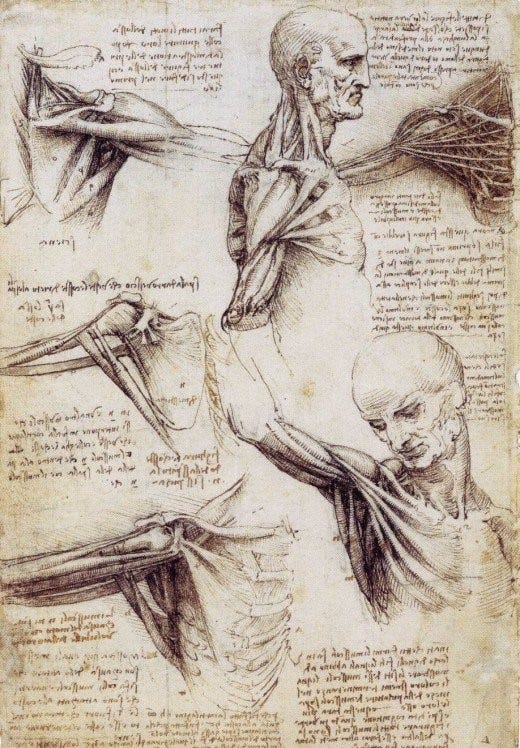Exploring the Intersection of Art and Science through Da Vinci
Written on
The Rhizomatic Genius of Leonardo Da Vinci
By delving into the life and works of Leonardo Da Vinci, often regarded as the quintessential Renaissance figure, we can forge Rhizomatic connections that inspire new models of thought.
Leonardo: The Quintessential Renaissance Figure
"To cultivate a well-rounded mind, one must study the science of art, the art of science, and sharpen one's perception, realizing that everything is interconnected." - Leonardo Da Vinci
Leonardo da Vinci was a polymath, excelling in various fields such as painting, engineering, anatomy, and music. He conceptualized inventions like the helicopter long before they were realized and designed military weaponry. His contributions included topographical maps for military strategies, intricate studies of human anatomy, and of course, masterpieces like the Mona Lisa.
Navigating the Rhizome
In my own journey, I traverse the Rhizome, a blend of art, science, philosophy, and writing. My diverse interests often lead me away from completing projects, echoing Leonardo’s own struggles with focus. Many biographers lament that he diverted his attention away from his artistic endeavors to pursue various scientific inquiries. While I don’t claim to rival his genius, I understand the challenge of maintaining focus amidst myriad interests. Yet, this situation offers the gift of Rhizomatic thinking—an interconnected web of ideas that fosters creativity.
Rhizomatic thinking, as introduced by Deleuze and Guattari in "A Thousand Plateaus," encourages the construction of new thought patterns by deconstructing existing ones. This approach emphasizes making connections rather than severing them, allowing for fresh insights and innovative models of thinking.
The Study of Many Arts
In the 15th century, the pursuit of multiple disciplines encompassed the exploration of humanity and existence. This quest for understanding is epitomized by Leonardo’s Vitruvian Man, a symbol of human anatomy derived from his dissections. Although some argue that the vast expanse of knowledge today makes multidisciplinary research impractical, many still successfully engage in diverse fields, achieving recognition and success.
Today's advancements in technology and access to information have transformed how we learn and explore. With the internet offering abundant resources, it's now more feasible for individuals to delve into various interests and turn them into profitable endeavors. However, the overwhelming amount of information can be daunting, often leading to analysis paralysis.
As we stand on the brink of a technological renaissance, the potential for integrating human and machine knowledge raises new possibilities for creativity and collaboration across disciplines.

Art and Science: A New Era
We are entering a period where disciplines converge, fostering new scientific and artistic endeavors. Art is evolving beyond traditional classifications, merging with crafts to form a cohesive community of creators inspiring one another.
The synergy between science and philosophy, even touching upon spirituality, reflects the early endeavors to understand existence. The collaboration between software developers and artists can yield transformative outcomes, while partnerships between engineers and science fiction writers can propel us to new frontiers.
To comprehend our world effectively, we must appreciate it through the lens of artistry, just as analyzing creativity through scientific methods is essential. Both elements are interdependent and should remain so.
My name is Nadia Davidson, and I’m an artist and writer passionate about exploring the interplay between art and creativity. For more inspiration, please visit my website at www.moltenimaginings.com.
Leonardo da Vinci: Inventions, Art & Science
This video delves into the multifaceted contributions of Leonardo da Vinci, exploring how his inventions, art, and scientific pursuits intersect.
Peter Tush: Dalí, da Vinci and Science
In this video, Peter Tush discusses the relationship between the artistic genius of Salvador Dalí and Leonardo da Vinci, highlighting their unique contributions to science and art.